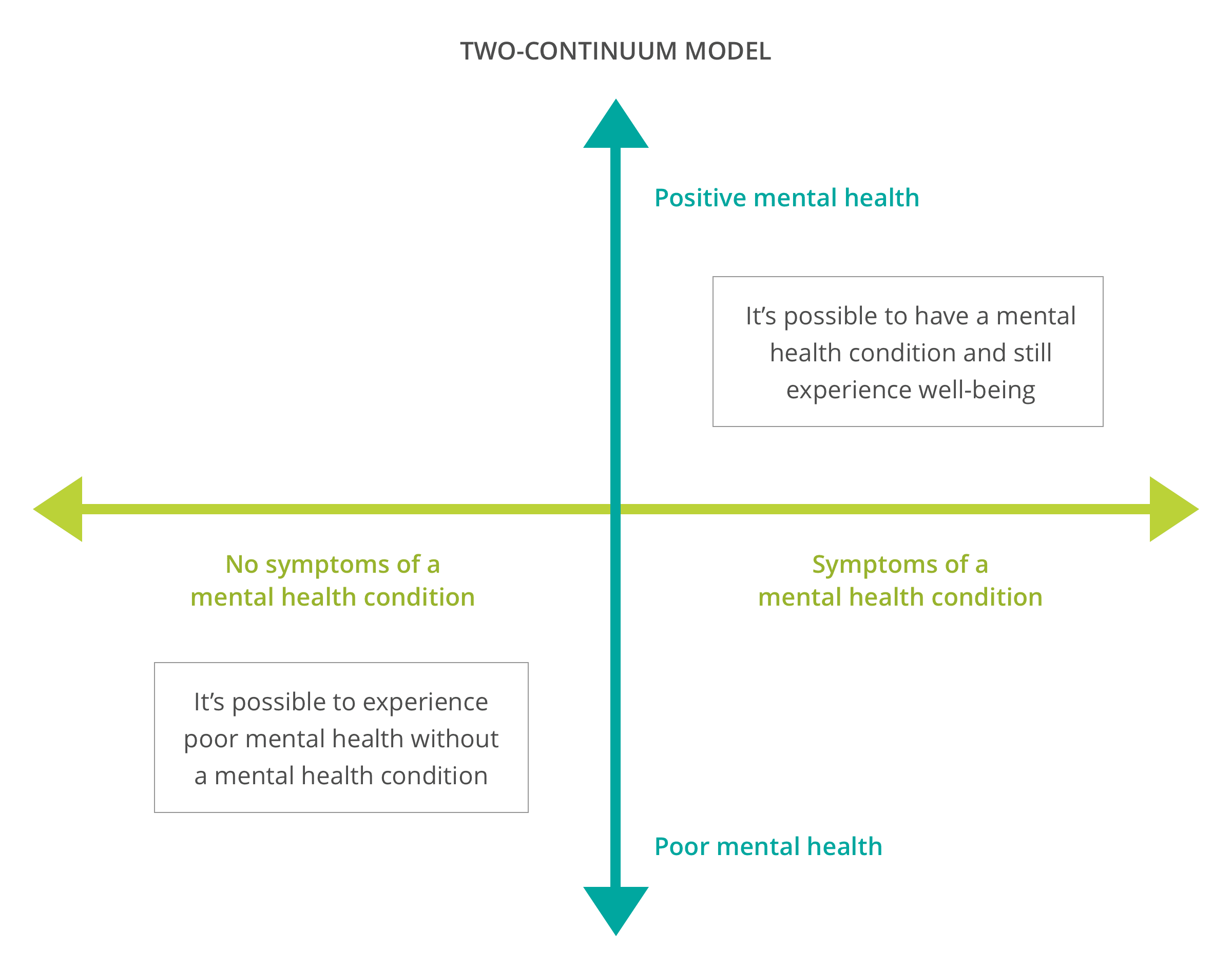WARNING: unbalanced footnote start tag short code found.
If this warning is irrelevant, please disable the syntax validation feature in the dashboard under General settings > Footnote start and end short codes > Check for balanced shortcodes.
Unbalanced start tag short code found before:
“Protective factor. Protective factors are conditions or attributes (skills, strengths, resources, supports or coping strategies) in individuals, families, communities or the larger society that help people deal more effectively with stressful events and mitigate or eliminate risk in families and co…”
Mental health is more than the absence of a mental health condition: it is a positive sense of well-being or the capacity to enjoy life and deal with the challenges we face.

Figure 1. Dual Continuum Model of Mental Health and Mental Illness
Mental health impacts every one of us. Just like with physical health, we all have our mental health to consider. Mental health is a spectrum, not a binary: people living with a mental illness can experience positive mental health and it is possible to experience poor mental health without a mental illness. The two-continuum model helps us understand this. The model includes one continuum (or line) to show the presence or absence of signs of a mental health condition, and one continuum to reflect positive (or optimal) to poor mental health.
Mental health is fluid, which means that it changes throughout our lives and under changing circumstances. It is influenced by a range of factors, including our life experiences and the social and economic conditions that shape our lives: the social determinants of health. The good news is that all mental illnesses can be treated.
There are multiple associations between mental health and chronic physical conditions that significantly impact people’s quality of life, put additional demands on healthcare and other publicly funded services, and generate consequences to society. The World Health Organization (WHO) defines health as a state of complete physical, mental and social well-being and not merely the absence of disease or infirmity. The WHO[fn]World Health Organization. (2014). Mental health: A state of wellbeing. Retrieved from http://www.who.int/features/factfiles/mental_health/en/[/fn] (2014) states that “there is no health without mental health.”
Nowhere is the relationship between mental and physical health more evident than in the area of chronic conditions. Here are just some of the associations between mental and physical health:
- Poor mental health is a risk factor for chronic physical conditions.
- People living with serious mental health conditions are at high risk of experiencing chronic physical conditions.
- People with chronic physical conditions are at risk of developing poor mental health.
The social determinants of health impact both chronic physical conditions and mental health. Key aspects of prevention include increasing physical activity, access to nutritious foods, ensuring adequate income and fostering social inclusion and social support. This creates opportunities to enhance protective factors[fn]Protective factor. Protective factors are conditions or attributes (skills, strengths, resources, supports or coping strategies) in individuals, families, communities or the larger society that help people deal more effectively with stressful events and mitigate or eliminate risk in families and communities and reduce risk factors related to aspects of mental and physical health.
Understanding the link between mind and body is the first step in developing strategies to reduce the incidence of co-existing conditions and support those already living with mental health conditions and chronic physical conditions.
[1] Promoting mental health : concepts, emerging evidence, practice : summary report / a report from the World Health Organization, Department of Mental Health and Substance Abuse in collaboration with the Victorian Health Promotion Foundation (VicHealth) and the University of Melbourne. (2004)[fn]World Health Organization. (2004). Promoting Mental Health: Summary Report. Retrieved from http://www.who.int/mental_health/evidence/en/promoting_mhh.pdf[/fn].